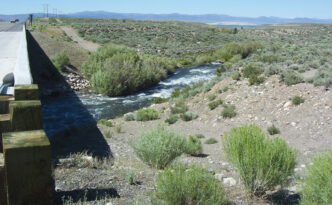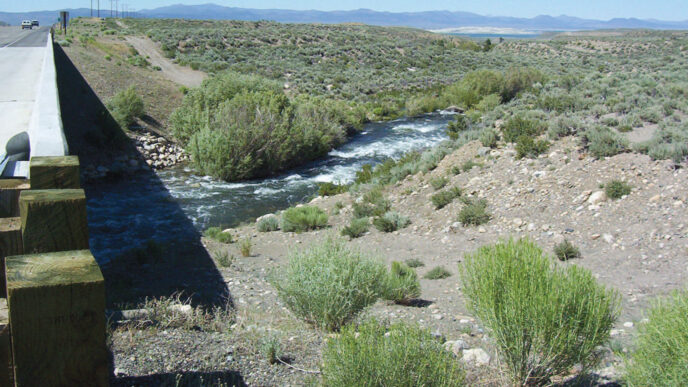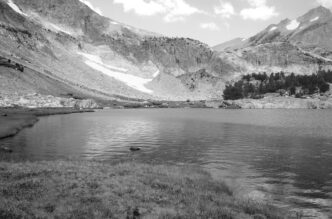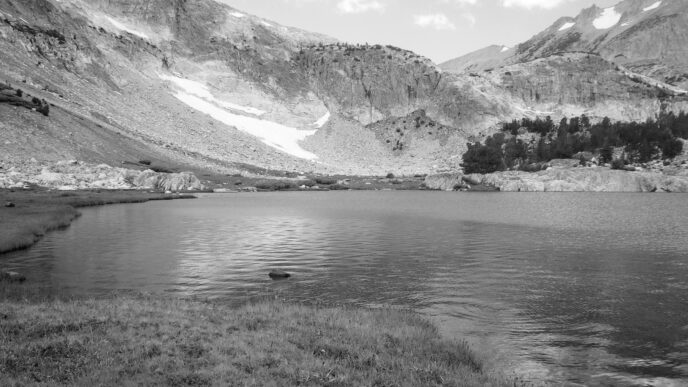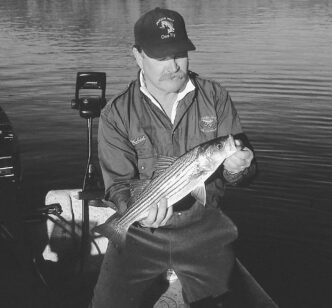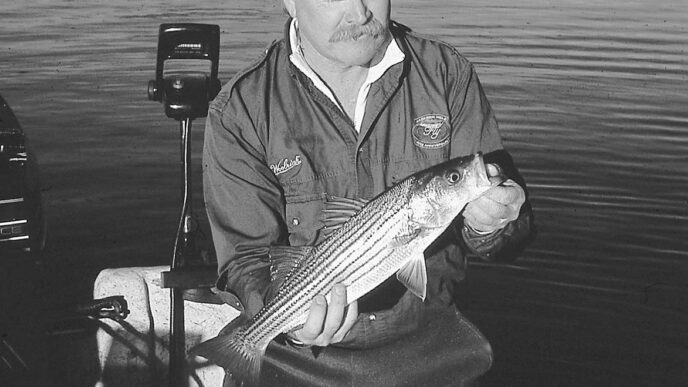If you were driving a Conestoga wagon from Missouri to California in 1849, “traveling light” meant you might be carrying a cast-iron skillet, a Dutch oven, and an iron coffee pot for preparing meals on the trail and for cooking in your new frontier home in Oregon or California. It was your entire kitchen, minus a few knives, buckets, bowls, and implements. (Some set out on the journey with a lot less than those essentials.) I have always been interested in camp cooking, but have resisted the trend to buy the latest and greatest culinary camping implements. To do so would require a trailer behind my well-traveled Suburban and more set-up and take-down time than I can tolerate. (I do admit to having four different types of barbecues at home.) After all, Mom and Dad traveled light, the way the pioneers did, and produced some very fine camp meals with a cast-iron skillet and a Dutch oven. Both worked well on a Coleman stove fueled by white gas or over the coals of a campfire. Mom grew up on the banks of the Sabine River in western Louisiana, Dad on a West Texas horse ranch. Both knew about cast-iron woodfired stoves, and camping with Mom and Dad in the 1950s showed me how to do a lot with very little.
Then, in 1961 and 1962, I worked as a timber cruiser out of a logging camp on the Klamath at Pecwan riffle, where Pecwan Creek enters the Klamath from the north side, approximately ten miles downriver from the confluence of the Trinity at Weitchepec. That was definitely not traveling light. It took six burly young men to lift off a pickup truck the stove that our camp cook used. He had to fuel a crew of 14, plus supervisors and an occasional camp follower, who burned more calories in one day than Weight Watchers would give you or me in a week. He cooked with a whole array of cast-iron skillets and Dutch ovens. Some were huge. Our forestry crews ran timber survey lines 10 days on and 4 days off, though, and it was on our off days that we traveled light. My crew resisted the temptation to drive 12 hours back to the Bay Area so we could pocket our per diem checks to help pay for college expenses. Instead, when camp emptied, our employer would give us the keys to a Chevy carryall and a full tank of gas. That tank of gas could get us to Trinity Lake, to the coastal lagoons out of Orrick, or farther south to Ruth Lake on the Mad River, then back to our camp at Pecwan four days later. Hamburger meat was 18 cents a pound, and a can of beans or chili was a dime. Iceberg lettuce and corn in the husk traveled well, and we hoped for a few good tomatoes later in the season. Under threat of death (the camp cook was the California state heavyweight division weightlifting champion), should we not return it in good shape, he loaned us a cast-iron skillet, a less treasured Dutch oven, some knives, a coffee can full of bacon grease, a small sack of white flour, and sometimes threw in a cube or two of butter from his kitchen stores.
With an axe, a hatchet, some matches, a hundred feet of rope, sleeping bags, and some war-surplus shelter halves, we could do quite well. A trout or two or a bass from Trinity Lake put us into gourmet territory for our meals. Our camp stove was a fire in a ring of stones. If we couldn’t pick up enough firewood from the forest floor, we threw a weighted rope over the lower dead branches of a pine, a fir, or better yet a tanbark oak, pulled hard, and ducked as the dry wood snapped off and came tumbling down around our heads.
We preferred to camp away from the madding crowd, if for no other reason than that there was no camping fee, as there was at state parks or recreation areas. As we became more sophisticated through our first summer, we built better fire pits. A favorite was shaped like a keyhole — a ring with a front opening and two parallel stone walls coming forward. It let us burn wood in one area and rake coals as needed, allowing us more control over the heat. The design was in favor thousands of years ago and remains a good choice today.
We had learned our cooking skills on camping trips with our parents and the Boy Scouts. The flour became bread on a stick. Sometimes a trout would wind up grilled on a water-soaked forked branch. Beer, butter, and a little garlic salt made a great basting sauce. Miner’s lettuce from a shady glen complemented our iceberg lettuce. Beans and chili were cooked on the coals in their own tin cans with the lid removed and were a staple. A sack of russet potatoes, the kind that came with a fishnet mesh bag and a drawstring, lasted four days. At night, we wrapped them in foil and roasted them in the coals. For breakfast, we diced them and fried them in bacon grease in that cast-iron skillet, along with trout or bass fillets.
As was the case at our Pecwan camp, it was a joy to be able to spend the night at water’s edge and cast a lure or fly out when the whim hit you. Often we caught our fish at first light or after the last rays left the ridge to the west. It’s hard to find places where you can do this. Perhaps that’s why camping and dining at streamside is such an important part of any extended float trip today. If the fishing’s no good, you hope that at least the scenery and the food is.
Sometimes we would build a tripod out of branches to suspend a coffee pot over the fire on a light chain. Last summer in Sisters, Oregon, I found some camp implements made of wrought iron in a Western boutique art gallery. They were replicas of pioneer cooking implements, built by an iron artisan who had researched pioneer cooking methods. I left Sisters with an iron tripod that can be erected over a campfire. Two three-foot sections channel together to form each of three legs that join at the top of the iron pyramid. An adjustable chain hangs from an apex hook and can suspend a coffee pot, a Dutch oven, a circular grill, a trussed prairie chicken, or a hunk of buffalo meat.
In July, my wife and I drove over from Tahoe to Genoa, the first white settlement in Nevada. The small community is near the base of the Kingsbury grade that connects the Tahoe basin and the southern Carson Valley and was the eastern terminus for Snowshoe Thompson’s winter mail route over the Sierra. There’s a nice little state park, log battlements, a collection of historic wagons, and several restored timber buildings that composed Mormon Station. We visit several times a year for a drink at Nevada’s oldest saloon, to forage at local antique shops, and to buy David John and the Comstock Cowboys’ latest CD. This is a beautiful, funky place with dusty lanes, rough-sawn board-and-batten buildings, stone walls, crowing roosters, and farm animals in most compounds. My favorite time is early winter, with resistant bits of color still on the deciduous trees and a dusting of snow on the ground. The saloon in Nevada’s oldest building is covered with pioneer and Comstock memorabilia, including a fabulous painting of a nude above the bar and glorious brass chandeliers. Those guys had good taste.
A few years ago, when I was working on a “Foraging Angler” column, I dropped in at the bar at midweek and got to talk with the owner. One draft beer on the house led to a second, and he told stories about the secret trap door in the floorboards, the unique memorabilia, and some of the interesting characters who had visited the bar.
My favorite story — and his — was about an elegant, petite, elderly lady who had arrived with what appeared to be her children. They sat at one of the bar’s antique round tables and ordered drinks. Our lady was in her nineties, dressed in a colorful, full-length print dress adorned with outrageous jewelry. The barkeep took a healthy swig on his beer, grinned, and said, “She knew how to dress, and you knew she could have been the Belle of the Ball in a Virginia City saloon, even if some of the glory had faded a bit.” He said her family drove up in a 700 series BMW, and you knew there was sophistication and money somewhere in their background.
When the aging matriarch was left alone with an empty Manhattan when her children left for a walking tour of Genoa, she beckoned my bartender friend to sit down with an enticing finger. Nevada’s Queen of the Silver Dollar leaned over to the bartender, winked with a seductive twinkle in her eye, and said, “I worked this bar eighty years ago, when I was sixteen. I turned tricks behind the saloon in that outbuilding.” She winked again with the charm of an enticing young woman, pulled out a hundred-dollar bill from her bra, and said, “Bring me a double Manhattan before my kids get back!”
Next door is my favorite antique shop, crammed into another historic brick building with the long, thick iron shutters that you see throughout Gold Rush country. They protected against fire, banditry, and insurrection. Hung from the dusty ceiling was a double-barreled, open-hammered 8-gauge shotgun that came from Wells Fargo — no steal here at $1,200 — but the crammed aisles also held a collection of antique Dutch ovens that needed only some sand or steel wool and a fresh seasoning with hot grease. Imagine cooking in camp using a Dutch oven that came across the plains in a covered wagon!
As luck would have it, descendants of the original Mormon Battalion were reenacting an encampment across the street at the Mormon Station State Park. We watched the faithful load cannons, clean their muzzle-loading rifles, and drill as women and children spun sheep’s wool, sewed, and prepared meals over white, ash-covered coals. I got to sample venison stew, a cherry cobbler, and homemade biscuits . . . all cooked in antique Dutch ovens. I noticed that the reenactment troops were cooking over Kingsford charcoal briquettes. With a Dutch oven, you put a specified number of glowing coals on top of the lid and underneath the legged iron bottom. Everything else in the assemblage was authentic.
I asked about the briquettes. The cooks told me that fuel had been a tremendous problem for those on the California and Oregon Trails, particularly when wagon train after gleaning wagon train had rolled through before. Kingsford made their job a lot simpler at the reenactments around the West each summer. Buffalo chips would have been available, but they would have made it difficult to get the heat just right, and they do have a distinct barnyard character.
All this emphasis on traveling light the old-fashioned way culminated in June this past year when a group from the Gold Country Fly Fishers camped at Lake Davis for four days while chasing the damselfly hatch. We chose to cook in camp over wood fires, experimenting with the same kitchen implements our forefathers used on the wagon train journeys west, on their farms, and on their storied cattle drives. I brought my iron tripod and circular grill, cast-iron skillet, Dutch ovens, and a wrought-iron spit. For the fire, I also brought seasoned black oak from my small ranch in Grass Valley and dried Manzanita stobs from my vineyard clearing. We cooked rib-eye steaks one evening. The iron tripod allowed us to position our grill over the good coals generated from my imported wood. Pine or cedar would have imparted a resinous flavor and would have burned too quickly. A slice into the steaks’ crust gave forth a small ribbon of red juice that signaled medium rare. They cooked quickly on the hot coals, which is a big help if you fish late.
Rabbit from a small farm on the North San Juan Ridge was my choice for our dinner the next evening. Rabbit takes a little longer than steaks, and we had the problem of the coals burning down too quickly. Mr. Kingsford came to the rescue. We failed the authenticity test, but that North San Juan bunny and its succulent juices proved a hit. So did neighbor Gus Young’s zinfandel/syrah meritage, which recently won a gold medal at the Nevada County Fair.
The next night, two Lake Davis rainbows that took my olive leech too vigorously wound up on the coals. We used aluminum foil, seasoned the fish with garlic salt, and stuffed them with onions, olive oil, lemon, and cilantro before suspending the packet over the fire. It’s hard to beat foil. Even my new Mormon acquaintances in Genoa lined their Dutch ovens with the stuff. It really saves time on the cleanup.
Our group is heading for Frenchman’s Lake soon, and we will report on further adventures with cast iron and charcoal. There are a few buffalo down the road on a ranch in Penn Valley, not far from the lower Yuba. A mother and calf got loose last year and made the headlines in the Nevada County Union for two weeks. I’m going to requisition some dried buffalo chips from that ranch and see what we can or cannot do using them as our cooking fuel. I’m thinking of more rabbit, only this time in a glorified vegetable-reduction stew that I call coniglio con tres funghi (rabbit with three mushrooms) in my cookbook in progress. We will accompany it with a jalapeño chili cornbread cooked in a Dutch oven. Dessert will be late-season berries with mint leaves and Grand Marnier. Add vanilla bean ice cream if you have it in camp.
Coniglio con tres Funghi
Cut-up rabbit Olive oil and butter
Diced white or yellow onions Diced celery
Diced carrots Minced garlic Salt and pepper
Minced Italian parsley
Mushrooms, either domestic or wild (half minced, half sliced for later)
Low-sodium beef stock
Beef/veal demiglace (the secret for any good sauce or reduction)
Red wine
Season the rabbit pieces with salt and pepper and brown them in the Dutch oven or a separate skillet. Reserve the browned rabbit and using the same Dutch oven, sweat several inches of the vegetables and herbs in some olive oil and butter. Reduce to marmalade consistency and deglaze with red wine. Reduce again and deglaze with beef stock and add several spoons of demiglace. At home, I reduce and deglaze as many as four or five times to enhance the flavor. Return the rabbit to the pot, along with the sliced mushrooms and enough beef stock to cover. Simmer for an hour to an hour and a half. Chicken breasts or an old vineyard pheasant work, too, but don’t cook them too long, or the meat comes off the bone. Serve over cornbread or grilled polenta.
The vegetable reduction can be made ahead and frozen. Just brown the rabbit and add it to the pot in camp. Actually, the entire meal can be made ahead at home in advance for that first night in camp, but I still like to see and hear the rabbit sizzling over the coals. A crisp salad with lots of the leafy green stuff and some bread is all you need to make a meal. I prefer a zinfandel or a primitivo, but any red wine works just fine. Happy trails!
Edible and Useful Plants of California
Book review by Richard Anderson
This handy paperback, written by Charlotte Bringle Clarke and published by the University of California Press, is the best field guide I’ve yet found for locating and identifying wild food plants in our state. Species are presented by region: of most utility to foraging anglers are the chapters “Foothills and Mountains” and “Wetlands — Ponds, Streams, Marshes, Seashore.”The book even provides recipes. Fishing the surf? Take kelp home and pickle it. Hitting the Clark Fork of the Stanislaus? Hmm, stinging nettles in place of spinach….






